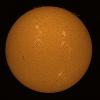Astronomy
Finding Life Using Old Instruments In New Ways
A Ph.D. student and his supervisor at Imperial College London have developed a simple way to test for active life on Mars and other planets using equipment already on the Mars Curiosity rover and planned for future use on the ExoMars Rosalind Franklin rover.
Starship Mars rocket met 'every major objective' on epic Flight 10 test launch, SpaceX says
Webb investigates complex heart of a cosmic butterfly
The NASA/ESA/CSA James Webb Space Telescope has revealed new details in the core of the Butterfly Nebula, NGC 6302. From the dense, dusty torus that surrounds the star hidden at the centre of the nebula to its outflowing jets, the Webb observations reveal many new discoveries that paint a never-before-seen portrait of a dynamic and structured planetary nebula.
CPR in space could be made easier by chest compression machines
SpaceX Successfully Launches Starship Spacecraft After String of Mishaps
Overcoming three recent failed tries, Elon Musk’s rocket company successfully flew its reusable jumbo booster and upper-stage Starship spacecraft
SpaceX's giant Starship Mars rocket nails critical 10th test flight in stunning comeback (video)
Thylacine's genome provides clues about why it went extinct
Thylacine's genome provides clues about why it went extinct
Europe regains contact with JUICE Jupiter probe ahead of crucial Aug. 31 Venus flyby
Dwarf planet Ceres may have once been suitable for life, new study suggests
Long-lost sailback shark rediscovered after more than 50 years
Long-lost sailback shark rediscovered after more than 50 years
NASA Researchers Show How Ceres Could Have Once Been Habitable
The dwarf planet is cold now, but new research paints a picture of Ceres hosting a deep, long-lived energy source that may have maintained habitable conditions in the past.


